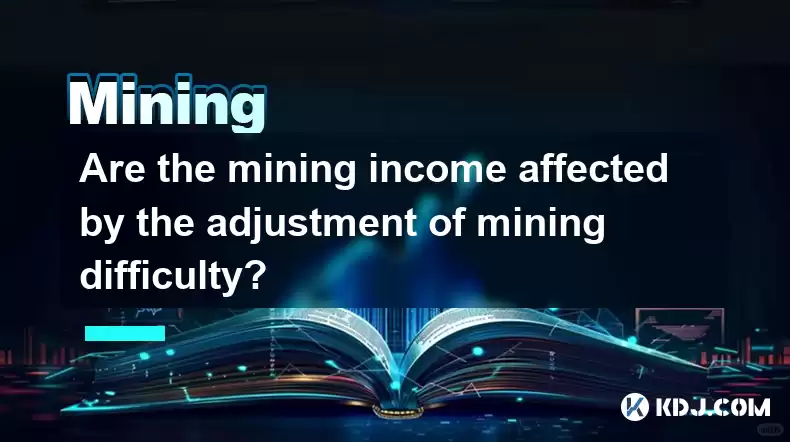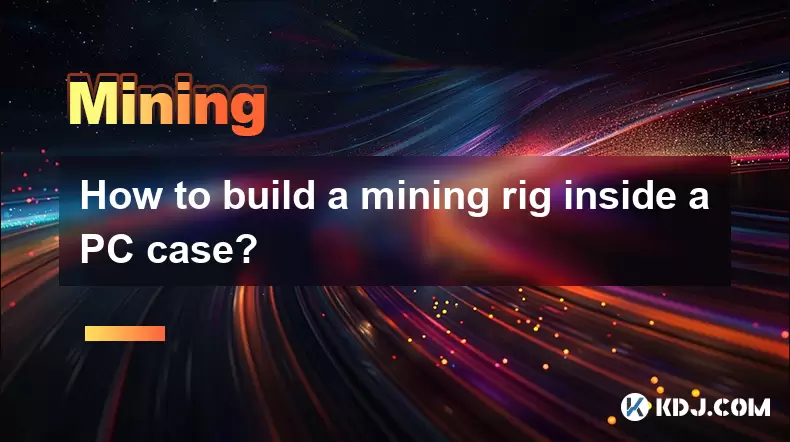-
 Bitcoin
Bitcoin $116700
0.24% -
 Ethereum
Ethereum $3973
4.34% -
 XRP
XRP $3.283
7.68% -
 Tether USDt
Tether USDt $1.000
0.01% -
 BNB
BNB $789.8
2.27% -
 Solana
Solana $176.2
3.31% -
 USDC
USDC $0.9999
0.00% -
 Dogecoin
Dogecoin $0.2238
5.14% -
 TRON
TRON $0.3389
-0.51% -
 Cardano
Cardano $0.7907
4.03% -
 Stellar
Stellar $0.4527
10.02% -
 Hyperliquid
Hyperliquid $41.07
4.27% -
 Sui
Sui $3.794
1.77% -
 Chainlink
Chainlink $19.49
10.40% -
 Bitcoin Cash
Bitcoin Cash $580.9
0.74% -
 Hedera
Hedera $0.2617
4.32% -
 Avalanche
Avalanche $23.41
3.67% -
 Ethena USDe
Ethena USDe $1.001
-0.03% -
 Litecoin
Litecoin $122.4
1.38% -
 Toncoin
Toncoin $3.364
1.49% -
 UNUS SED LEO
UNUS SED LEO $8.988
0.37% -
 Shiba Inu
Shiba Inu $0.00001295
2.82% -
 Uniswap
Uniswap $10.62
5.75% -
 Polkadot
Polkadot $3.922
4.46% -
 Dai
Dai $1.000
0.01% -
 Bitget Token
Bitget Token $4.494
2.15% -
 Monero
Monero $268.0
-1.30% -
 Cronos
Cronos $0.1523
3.68% -
 Pepe
Pepe $0.00001127
4.43% -
 Aave
Aave $285.4
4.85%
Are the mining income affected by the adjustment of mining difficulty?
Mining difficulty directly affects miner income; higher difficulty reduces individual rewards, while lower difficulty initially boosts profits but attracts more miners, eventually increasing difficulty again. Other factors like cryptocurrency price and energy costs also significantly impact profitability.
Mar 03, 2025 at 10:36 am

Key Points:
- Mining difficulty adjustments are a fundamental mechanism in proof-of-work blockchains like Bitcoin.
- Difficulty adjusts to maintain a consistent block time, influencing miner profitability.
- Higher difficulty means more computational power is needed, reducing individual miner rewards.
- Lower difficulty increases profitability, but also attracts more miners, potentially leading to a future difficulty increase.
- Factors beyond difficulty, such as cryptocurrency price and energy costs, significantly impact mining income.
Are the Mining Income Affected by the Adjustment of Mining Difficulty?
Yes, mining income is directly impacted by adjustments in mining difficulty. Mining difficulty is a measure of how computationally hard it is to solve the cryptographic puzzle required to mine a block and receive the associated block reward. This difficulty is automatically adjusted by the network algorithm at regular intervals (e.g., every two weeks for Bitcoin) to maintain a consistent block generation time.
The goal of these adjustments is to keep the network secure and stable. If the difficulty is too low, blocks are found too quickly, potentially compromising security. Conversely, if the difficulty is too high, block times become excessively long, disrupting transactions.
When mining difficulty increases, it becomes harder for miners to solve the cryptographic puzzle. This means that individual miners, with their existing hashing power, will find fewer blocks, thus receiving fewer block rewards. Consequently, their mining income decreases proportionally. The increased difficulty is a response to more miners joining the network, increasing the overall hashing power.
Conversely, a decrease in mining difficulty makes it easier to find blocks. This directly translates to an increase in the number of blocks a miner can solve and thus an increase in their mining income. However, this is usually a temporary phenomenon. A lower difficulty attracts more miners, leading to a rapid increase in the network's total hashing power, and ultimately, another difficulty increase.
How Does Difficulty Adjustment Affect Miner Profitability?
The profitability of mining is a complex interplay of several factors. Mining difficulty is a crucial element, but it's not the only one. The cryptocurrency's price, the cost of electricity, the efficiency of the mining hardware, and transaction fees all play a significant role.
For example, even with an increase in difficulty, if the price of the cryptocurrency rises substantially, the reduced number of blocks mined might still yield a higher overall profit. Conversely, a decrease in difficulty might not be enough to offset high energy costs and low cryptocurrency prices, resulting in minimal or even negative profits.
Therefore, miners must constantly monitor and analyze these variables to make informed decisions about their operations, adjusting their strategies as needed to maintain profitability. This includes potentially switching to more efficient hardware or temporarily halting operations if conditions become unfavorable.
What are the Factors Affecting Mining Income Besides Difficulty?
Beyond the direct impact of difficulty adjustments, several other factors influence a miner's income. The most prominent is the price of the cryptocurrency being mined. A higher price significantly increases the value of the block reward, even if the number of blocks mined remains constant.
Energy costs are another critical factor. Mining is energy-intensive, and high electricity prices can quickly eat into profits. Miners often locate their operations in areas with low electricity costs to mitigate this expense.
The hardware efficiency also matters greatly. Modern, high-performance ASICs (Application-Specific Integrated Circuits) are significantly more efficient than older models, enabling miners to solve more blocks with less energy consumption.
How Do Miners Respond to Difficulty Adjustments?
Miners react to difficulty adjustments strategically. When the difficulty increases, some miners might choose to shut down less efficient operations, or consolidate their hashing power to remain competitive. Others might invest in more powerful and energy-efficient hardware to maintain their mining output.
Conversely, when difficulty decreases, more miners might enter the network, drawn by the potential for higher profits. This influx of miners increases the network's overall hashing power, eventually leading to another difficulty increase. The cycle of difficulty adjustment and miner response is a continuous process that maintains the stability and security of the blockchain.
What is the Relationship Between Hashrate and Difficulty?
The network's hashrate, or the total computational power dedicated to mining, is directly related to the mining difficulty. A higher hashrate generally leads to a higher difficulty, and vice versa. The difficulty adjustment algorithm aims to keep the block generation time relatively constant, adjusting the difficulty based on the observed hashrate.
If the hashrate increases significantly, the algorithm increases the difficulty to prevent blocks from being mined too quickly. Conversely, if the hashrate decreases, the difficulty is reduced to avoid excessively long block times. This dynamic relationship ensures the network's security and stability.
How Can I Estimate My Mining Income?
Estimating mining income requires considering several factors:
- Hashrate of your mining hardware: The higher the hashrate, the more blocks you can potentially mine.
- Current mining difficulty: This determines how difficult it is to find a block.
- Block reward: The amount of cryptocurrency received for mining a block.
- Transaction fees: These are added to the block reward and can contribute significantly to income.
- Electricity cost: This is a major operating expense.
- Cryptocurrency price: The value of the mined cryptocurrency at the time of sale.
Common Questions:
Q: Does a higher mining difficulty always mean less profit?
A: Not necessarily. While a higher difficulty reduces the number of blocks you find, a higher cryptocurrency price can offset this, resulting in higher overall profit.
Q: How often does mining difficulty adjust?
A: The frequency of difficulty adjustment varies across different cryptocurrencies. Bitcoin, for example, adjusts approximately every two weeks.
Q: Can I predict future mining difficulty?
A: Predicting future difficulty with certainty is impossible. It's influenced by many unpredictable factors, including the price of the cryptocurrency and the actions of other miners. However, you can track current trends and make educated estimates.
Q: If mining becomes unprofitable, what happens?
A: If mining becomes consistently unprofitable, some miners will likely shut down their operations. This reduces the network's hashrate, leading to a decrease in difficulty, potentially making mining profitable again for some.
Q: Are there any other factors that can affect my mining income beyond difficulty, price, and electricity costs?
A: Yes, factors such as pool fees (if you're mining in a pool), hardware maintenance costs, and potential regulatory changes can also impact your mining income.
Disclaimer:info@kdj.com
The information provided is not trading advice. kdj.com does not assume any responsibility for any investments made based on the information provided in this article. Cryptocurrencies are highly volatile and it is highly recommended that you invest with caution after thorough research!
If you believe that the content used on this website infringes your copyright, please contact us immediately (info@kdj.com) and we will delete it promptly.
- Mutuum Finance, Bitcoin Whales, and Binance: Decoding the Crypto Currents
- 2025-08-08 22:30:11
- Bitcoin, Great Depression, and Financial Crisis: Are We on the Brink?
- 2025-08-08 22:30:11
- PENDLE Price Pumping: Is This Cryptocurrency's Momentum Sustainable?
- 2025-08-08 20:50:11
- BlockchainFX (BFX): The Crypto Presale Shaking Up the Scene in 2025
- 2025-08-08 21:10:15
- GMO Miner, Bitcoin, and XRP Mining: A New Era of Passive Income?
- 2025-08-08 21:10:15
- Web3 Antivirus, Token Validation, Wallets & Exchanges: Staying Safe in DeFi
- 2025-08-08 21:16:08
Related knowledge

What is "proof-of-work" and how does it relate to mining?
Aug 07,2025 at 02:03pm
Understanding the Concept of Proof-of-WorkProof-of-work (PoW) is a consensus mechanism used in blockchain networks to validate transactions and secure...

What are the differences between mining on Windows vs. Linux?
Aug 06,2025 at 11:29pm
Overview of Cryptocurrency Mining PlatformsCryptocurrency mining involves using computational power to solve complex cryptographic puzzles and validat...

How to use an old computer for cryptocurrency mining?
Aug 07,2025 at 12:42pm
Understanding the Feasibility of Using an Old Computer for MiningUsing an old computer for cryptocurrency mining may seem outdated, but it is still te...

Can you mine cryptocurrency using solar power?
Aug 07,2025 at 12:00am
Understanding the Basics of Cryptocurrency MiningCryptocurrency mining involves validating transactions on a blockchain network by solving complex cry...

How to build a mining rig inside a PC case?
Aug 06,2025 at 11:01pm
Understanding the Basics of a Mining Rig in a PC CaseBuilding a mining rig inside a PC case involves transforming a standard computer chassis into a d...

What are the best cryptocurrencies to mine with an ASIC?
Aug 08,2025 at 01:22am
Understanding ASIC Mining and Its Role in CryptocurrencyASIC stands for Application-Specific Integrated Circuit, a specialized hardware designed to pe...

What is "proof-of-work" and how does it relate to mining?
Aug 07,2025 at 02:03pm
Understanding the Concept of Proof-of-WorkProof-of-work (PoW) is a consensus mechanism used in blockchain networks to validate transactions and secure...

What are the differences between mining on Windows vs. Linux?
Aug 06,2025 at 11:29pm
Overview of Cryptocurrency Mining PlatformsCryptocurrency mining involves using computational power to solve complex cryptographic puzzles and validat...

How to use an old computer for cryptocurrency mining?
Aug 07,2025 at 12:42pm
Understanding the Feasibility of Using an Old Computer for MiningUsing an old computer for cryptocurrency mining may seem outdated, but it is still te...

Can you mine cryptocurrency using solar power?
Aug 07,2025 at 12:00am
Understanding the Basics of Cryptocurrency MiningCryptocurrency mining involves validating transactions on a blockchain network by solving complex cry...

How to build a mining rig inside a PC case?
Aug 06,2025 at 11:01pm
Understanding the Basics of a Mining Rig in a PC CaseBuilding a mining rig inside a PC case involves transforming a standard computer chassis into a d...

What are the best cryptocurrencies to mine with an ASIC?
Aug 08,2025 at 01:22am
Understanding ASIC Mining and Its Role in CryptocurrencyASIC stands for Application-Specific Integrated Circuit, a specialized hardware designed to pe...
See all articles

























































































